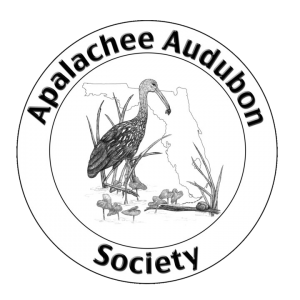By Don Morrow
Sometimes birding is more than just listing the species that you see. It includes paying attention to how birds behave. Recently, I was surveying shorebirds on Stony Bayou I at St. Marks NWR and had already made my way halfway around the pool. I saw a group of about a hundred shorebirds and finished counting the nearby Black-bellied and Semipalmated Plovers. I turned my attention to a large group of peeps and noticed that all of the previously counted peeps from the other side of the pool were flying in to join them. Suddenly, all the peeps took off.
Now, when shorebirds take flight, there is probably a reason. It could be that the tide is changing the water depth or a potential predator is flying overhead. I watched as the peeps scattered in twisting murmurations. In this case, their flight turned out to be due to a fast-closing Peregrine Falcon. Always good to look up.
Looking for the closer plovers, I noted that they hadn’t flown. The Semipalmated Plovers had gone belly deep in the mud; keeping a low profile. The Black-bellied Plovers had been walking in shallow water and had crouched as low in the water as they could without resorting to snorkels. The plovers’ strategy had been to hide and let the peeps get chased by the Peregrine.
Continuing my shorebird survey, I made my way down to the lighthouse. I could see that there was a group of larger mixed shorebirds out on the salt flats to the East of Lighthouse Pool. I parked and walked up the stairs of the viewing platform just as a Peregrine Falcon (probably the same bird, it had the same juvenile Tundra plumage) flew in low over the salt marsh. It was late afternoon and with the sun at my back the falcon was spectacular. I tracked it through my binoculars as it swooped low over the salt marsh and flew away. When I looked for the shorebirds, most had flown. There were Willets frozen in place that had not moved. As I watched, six Black-bellied Plovers flew in and landed.
Now, I believe that the Plovers had been part of the group of shorebirds that I had seen before the Peregrine arrived. This time of the year, Black-bellied Plovers can usually be found on those flats. Why hadn’t they hunkered down like the plovers that I had observed earlier? I had seen no peeps with this group. Does a plover’s threat assessment include available decoys? Did the Willets rely on the plovers to distract the Peregrine?
I don’t have any answers. However, observing bird behavior and confronting challenging questions does as much to keep me birding as the thrill of finding uncommon species.

















